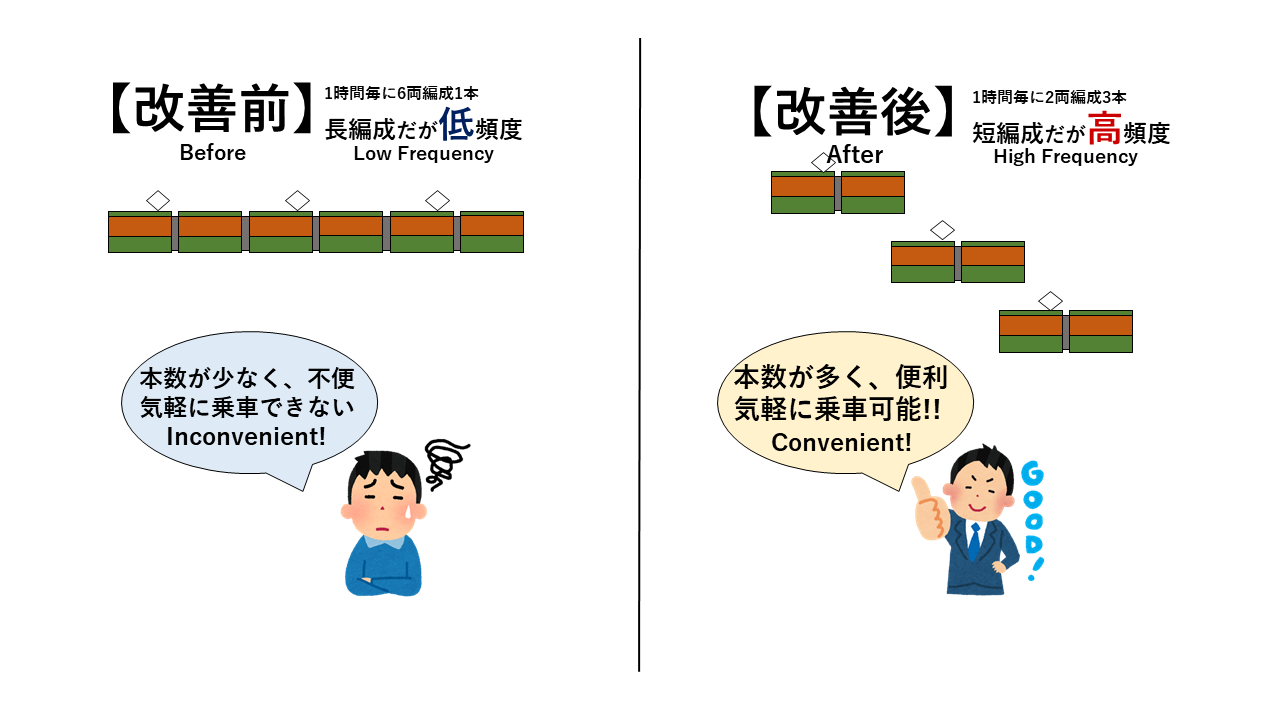Short organization and high frequency operation
In the railway, it is said that “Short organization and high frequency operation” is a effective measure to improve passengers convenience. “Short organization and high frequency operation” is that operating shorter trains in higher frequency than before.
For example, if there is a 6-car formation train running once an hour and an operation company improves the train to be a 2-car formation train which runs once in 20 minutes. As a result, although the total transport capacity does not change, frequency of train tripling, so convenience of passengers is improved significantly.

Merit
The number of train will increase so that each lines’ convenience will be improved as a result.Demerit
It becomes to be difficult to keep enough workers because more attendants will be needed accompanying by the number of lines increase. Moreover, it is possible to occur increasing of the personal expenses.
”City train” measure
One typical example of a successful “Short formation and high frequency” case is the so-called "City train" policy that the National Railway (now JR) conducted in various places.
This measure was first held in 1982 in the Hiroshima area of Sanyo Main Line centering around Hiroshima City and the Nagoya area on the Kansai Main Line centering around Nagoya City.In the past, the formation which had been operated from 7 or 8 in the former was shortened to 3 or 4, and instead the number of trains was increased from 1 or 2 per hour to 3 to 4 per hour.
Also, a pattern of each interval which was imbalance in the past was adjusted to be balanced.
Besides, improvement of connection with other routes, construction of a new station meeting with the needs were carried out.
As a result, the convenience of the railway in both areas was greatly improved and it also led more passengers.

